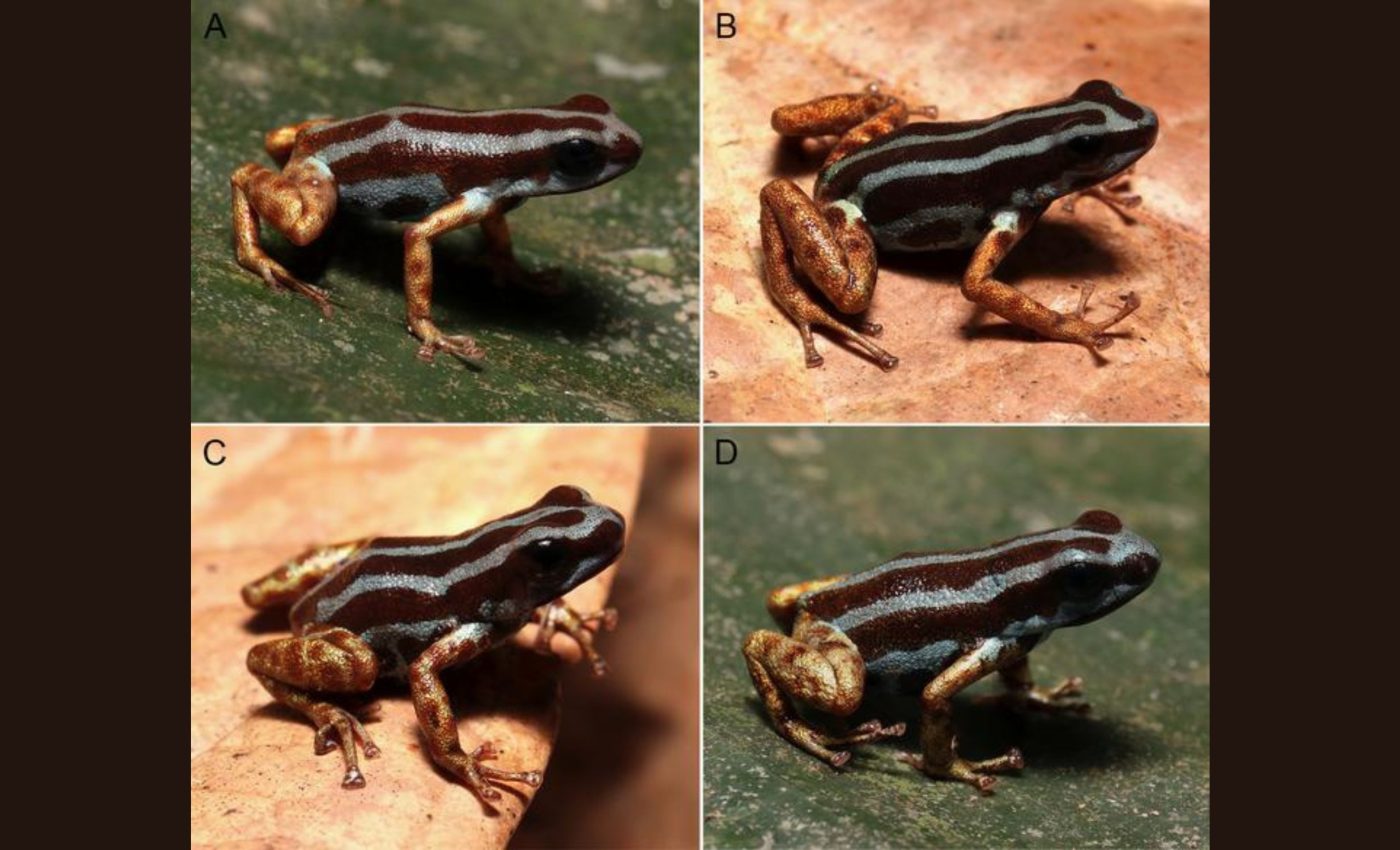
Blue frog with copper legs discovered in the Amazon rainforest
A rare, bright-blue amphibian has been identified in the western Amazon. This small creature, which belongs to the poison dart frog family, stands out with unusual copper accents on its limbs and an overall eye-catching look.
Dr. Evan D. Koch, a researcher at the National Museum of the Czech Republic, helped document the new species in an underexplored region near the Juruá River.
The team first encountered the frog in March 2023, although its official recognition as a new species was only documented on May 14, 2025.
Striking blue poison dart frog
The new species of frog bears light blue stripes set against a darker upper body. Its metallic-hued legs are patterned with irregular brown spots, making the species a definite standout.
Experts have formally named it Ranitomeya aetherea, referencing its sky-like tones that bring to mind something almost beyond this world.
Early observations suggest it inhabits lowland Amazonian forests, roughly 443 ft (135 meters) above sea level. Individuals often perch on broad-leafed plants within these humid, palm-rich habitats.
Unusual colors and potential toxicity
Members of the broader family, Dendrobatidae, are well known for their potent neurotoxins, though each species has its own chemical profile.
Many rely on aposematic coloration to warn potential predators that making a meal of it would be a bad idea. Even though researchers have only examined a handful of R. aetherea specimens, they suspect that the frog’s bright patches hint at toxic defenses, much like in its colorful cousins.
For locals, the presence of vibrant frogs is nothing new, but the copper and pale stripes on this one are not something they typically see. Field teams were quick to note that the frog’s underside shares this light-blue tone, and is spotted with dark blotches.
Characteristics of the blue frog
Study participants noted that these frogs stay near water-filled compartments in certain broad-leaf flora. The watery pockets, known as phytotelmata, cradle single R. aetherea tadpoles at various stages of development.
Each juvenile has a tinted tail and a small oval mouth. Once they reach more advanced stages, faint stripes start to appear on the tiny bodies.
According to field notes, adults seem most active in the early morning or late afternoon. Males will climb small plants, typically a few feet off the ground, to call out in a series of fast, chirping notes.
Observers say that solitary males can gather within the same area without obvious conflict, though they appear to react strongly to call playbacks.
Unique vocal patterns
Calling sessions last under a second and carry a quick flurry of distinct, tonal notes. That pattern sets it apart from a few other relatives whose calls have fewer notes or run at a different pitch.
In one instance, a male produced a longer series when a female approached, suggesting there may be a special “courtship call.”
That same male was spotted leading the curious female toward a hidden leaf base with water trapped inside. This behavior offers a peek into how they might bond or share parental tasks.
Previous studies on other species in this group have documented complex childrearing steps, and the research team suspects that R. aetherea may have similar habits.
Strict habitat requirements
Across South America, frogs of the genus Ranitomeya often occupy extremely specific habitats. It has been over ten years since a new species in this genus was named, which makes this a significant find for biologists who are keen on amphibian diversity.
Some of its relatives, like Ranitomeya imitator, feature more greens and spots, while others go for bolder oranges or reds. R. aetherea’s softly tinted copper legs represent a separate thread in the group’s evolutionary tree.
Further genetic work suggests it clusters close to other species from the southwestern Amazon, yet it holds its own distinct lineage.
Investigators suspect that these frogs may have strict habitat requirements and boundaries around their living space, which means they may potentially have very limited range sizes.
Such a focus on exact territory often makes each species vulnerable to land-use changes or deforestation.
Significance of the blue frog discovery
Local communities were aware of various frogs in their forest, but the scientific world had no formal record of frogs with this patterning until now.
Its presence highlights that the southwestern Amazon, with patches that are still difficult to reach, can house animal groups that slip under the radar. Additional exploration may uncover other new amphibians, especially within pockets that share similar vegetation or water sources.
Researchers plan to keep monitoring these populations over the coming years. This effort is essential for tracking any environmental threats that could place these frogs at risk.
Given the increasing human activities in this region, timely observation may help shape protective measures in the near future.
The study is published in the journal PLOS ONE.
Image Credit: Koch et al., 2025, PLOS One, CC-BY 4.0
—–
Like what you read? Subscribe to our newsletter for engaging articles, exclusive content, and the latest updates.
Check us out on EarthSnap, a free app brought to you by Eric Ralls and Earth.com.
—–













